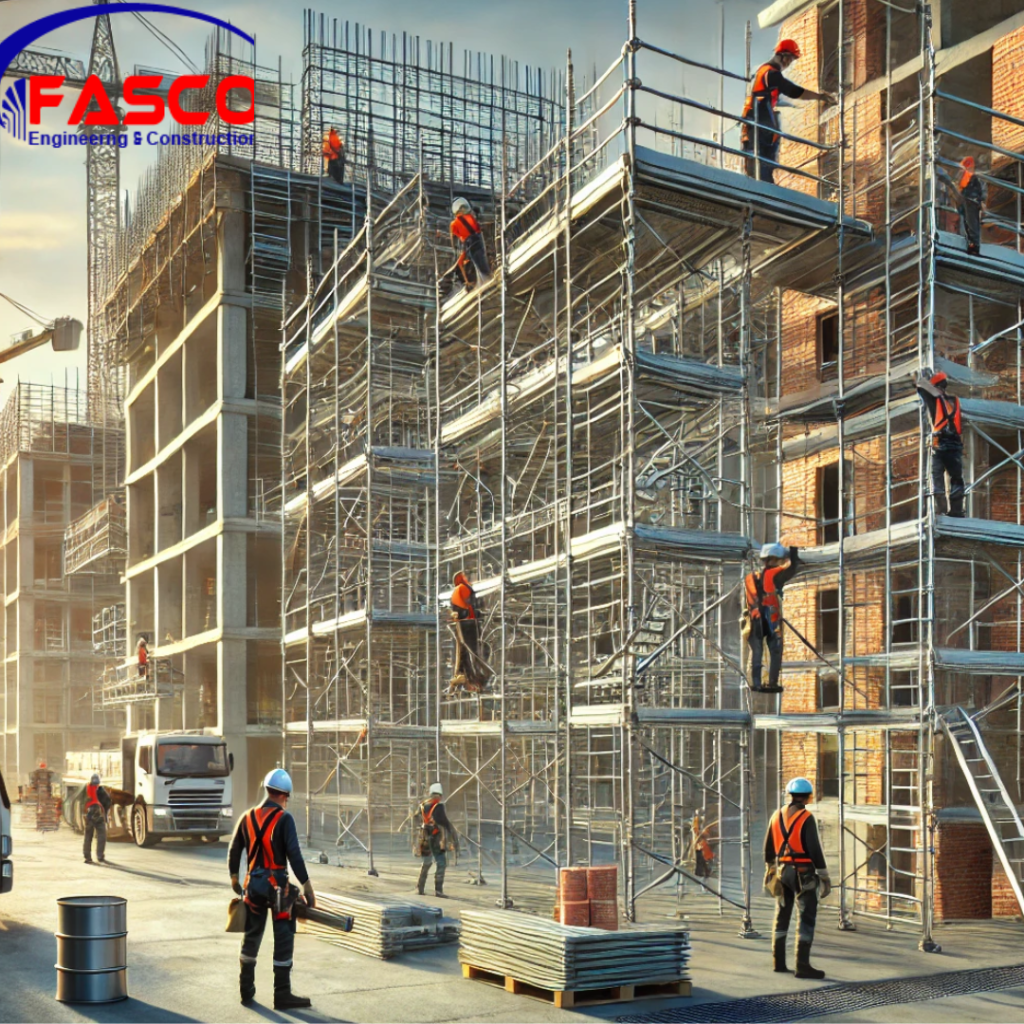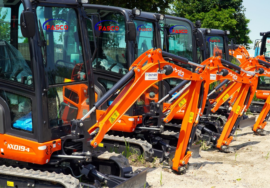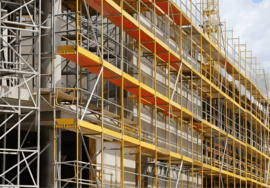
The Critical Role of Quality Scaffolding in Construction
The Importance of Quality Scaffolding in Construction Projects
In the construction industry, safety and efficiency are paramount. Among the many tools and technologies that ensure both, scaffolding stands out as a critical component. While scaffolding might appear to be a simple structure of metal bars and planks, its importance in construction projects cannot be overstated. From safety to efficiency and even maintaining the structural integrity of the building, scaffolding plays a vital role. In this blog, we will explore in detail the importance of quality scaffolding in construction projects.

Ensuring Worker Safety with Quality Scaffolding
The Risks of Poor-Quality or No Scaffolding
Construction sites are busy environments where various tasks are carried out simultaneously, often at significant heights. Imagine a worker laying bricks or installing windows on the 10th floor of a building without a stable platform. The risks of falls and accidents would be enormous. Quality scaffolding provides a safe, stable platform for workers to move around and perform their tasks securely.
Poor-quality scaffolding, or even worse, the absence of scaffolding, dramatically increases the risk of accidents. According to the Occupational Safety and Health Administration (OSHA), falls from height are one of the leading causes of injuries and fatalities in construction. Well-constructed scaffolding helps mitigate these risks by providing workers with a secure environment in which to work.
How Scaffolding Enhances Safety
Quality scaffolding is designed and built to support the weight of workers, their tools, and materials. It allows workers to access hard-to-reach areas with ease and provides a stable surface from which to perform their tasks. The use of guardrails, non-slip platforms, and proper bracing further ensures that the risk of accidents is minimized.
Additionally, scaffolding can be erected around the entire structure, allowing workers to move around freely without having to rely on ladders or other less stable means of access. This not only increases safety but also improves the overall workflow of the project.
Improving Efficiency and Productivity on Construction Sites
Time-Saving Benefits of Scaffolding
Efficiency is another major benefit of quality scaffolding in construction. Having a reliable platform at the appropriate height allows workers to perform their tasks more effectively. Whether it’s bricklaying, plastering, painting, or installing windows, scaffolding provides workers with easy and safe access to all areas of a building.
Without scaffolding, workers would have to spend time setting up ladders or other temporary means of access, which could slow down the project significantly. Scaffolding is quick to erect and dismantle, allowing workers to start and finish their tasks in a timely manner, thereby increasing the overall productivity of the project.
Supporting Team Collaboration and Multi-Tasking
With scaffolding, multiple workers can operate at different levels simultaneously, improving team collaboration and overall site efficiency. Teams can work on various parts of the building, such as electrical installations on one level and painting on another, without interfering with each other. This multi-tasking capacity allows construction projects to progress at a faster rate, saving time and reducing labor costs.
Preserving Structural Integrity During Construction
Preventing Damage with Proper Scaffolding
In addition to safety and efficiency, quality scaffolding plays a crucial role in preserving the structural integrity of the building under construction. Scaffolding provides support not only for the workers but also for the building itself. It stabilizes areas that are under construction, helping to prevent damage that could compromise the building’s integrity.
For example, in masonry work, scaffolding allows workers to apply even pressure while laying bricks, ensuring that the wall remains stable and properly aligned. Similarly, in painting or coating jobs, scaffolding ensures that the surface being worked on is evenly accessed, preventing any weak spots from developing.
Long-Term Benefits of Structural Support
By preventing accidents and damage during construction, scaffolding ensures that the building remains in good condition once completed. This is critical for the long-term durability and safety of the structure. A building that has been constructed using quality scaffolding will have fewer structural weaknesses, leading to a longer lifespan and fewer maintenance issues down the line.
Conclusion: Scaffolding as a Cornerstone of Construction Projects
Scaffolding is not just a temporary structure; it is an essential part of the construction process that ensures the safety, efficiency, and integrity of a project. From providing a secure platform for workers to preventing structural damage, quality scaffolding plays a crucial role at every stage of construction. When you see scaffolding around a building, it’s not just a frame of metal bars and planks—it’s a key element that underpins the entire project’s success.
In conclusion, investing in quality scaffolding is a smart decision for any construction project. It safeguards workers, improves productivity, and ensures that the final structure is built to last. The importance of scaffolding in construction cannot be understated, and it remains a critical tool in the successful completion of projects, no matter their size or complexity.






